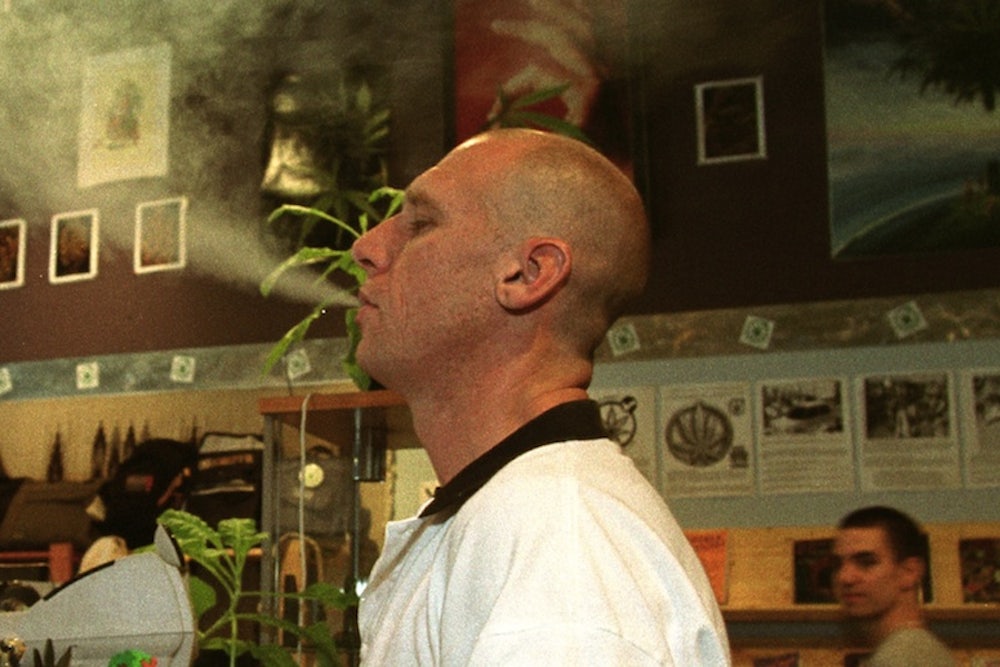Yesterday, New York governor Andrew Cuomo announced that he would authorize 20 hospitals to distribute medical marijuana, making New York the 21st state to legalize the sale of prescription pot. Who are medical marijuana’s main customers? In October, a team of psychiatrists at the University of Michigan interviewed 348 adults at a medical marijuana clinic in Michigan for a paper in the journal Drug and Alcohol Dependence. Though their study was based on only one clinic, their findings can still provide clues into the demographics of medical marijuana users.
They’re middle-aged
"On average, participants in this study were 41.5 years of age (SD = 12.6), with half of them at least 50 years of age."
They’re mostly men
"The sample was 66.1% male (n = 230)."
They're looking to relieve their pain, not get high
"The vast majority (87%, 303/348) of participants reported that they were seeking medical marijuana for pain relief, either alone or in conjunction with other reasons. Relatively few participants (9.8% of 348) reported only non-pain reasons for seeking medical marijuana and 9 (3% of 348) declined to answer the question. The other reasons for seeking medical marijuana in this sample were: spasms (n = 66), nausea (n = 41), musculoskeletal problems (n = 23), neurological (n = 18), cancer (n = 12), gastrointestinal problems (n = 11), glaucoma (n = 10) or chronic infection (HIV and Hepatitis C; n = 8)."
They’ve definitely smoked weed before
"Lifetime marijuana use was common in all participants (96%, n = 317/331), with a modestly higher proportion for returning visitors, compared to first-time visitors (99% vs. 93%; p = 0.01). Within the three months prior to the interview, 61% (n = 195/317) of those who ever used marijuana reported daily or almost daily use. For renewing visitors, the proportion was 76% (n = 106/139), compared with 51% (n = 89/174) of first-time visitors."
And they’ve probably used other drugs, too
"Most participants reported alcohol use within their lifetime (89%, n = 294/329). Approximately 40% (n = 131/327) of the sample reported nonmedical use of opioids in their lifetime. Other commonly used substances were hallucinogens (38%, n = 121/321) and cocaine (35%, n = 116/324). Lifetime substance use was significantly greater among patients seeking to receive certification to renew their medical marijuana card relative to first time patients for hallucinogens (p = 0.02), cocaine (p < 0.0001), amphetamines (p < 0.001), inhalants (p < 0.0001), and heroin (p = 0.03), but not for alcohol or nonmedical use of prescription opioids.
"A majority (68%, n = 230/336) of respondents reported they used prescription opioids differently than what was prescribed (i.e., more than prescribed, used or borrowed medications belonging to someone else, or used medications for reasons other than pain relief), within the last month."
